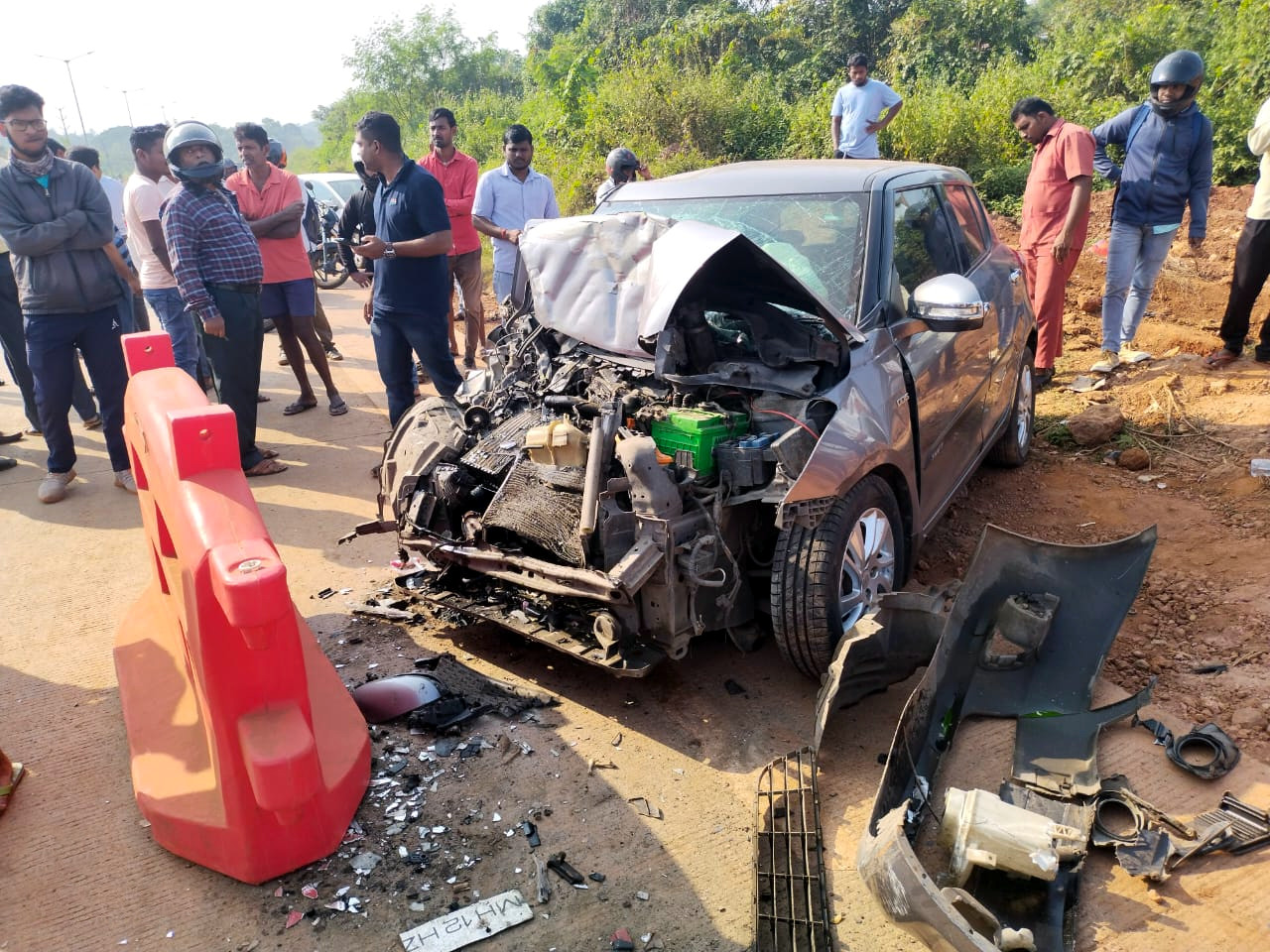Goa is going through the riskiest period to be on the roads. Five accidents on average per day and one death every 27 hours have raised serious apprehensions about road safety. The Goan brings to our readers a second series on the increasing road accidents where we try to seek answers if Goa is paying a heavy price for widened roads and highways, and why is there no constant watch for constant violations.

The spate of accidents continues to rock Goa. Overspeeding, jumping red lights, helmetless riding, talking on the mobile phone while riding/driving, non-adherence to lane driving and overtaking in a wrong manner have become the order of the day.
Quite a few national and international studies found these as the most common behaviour of road drivers, leading to accidents. But pathetic conditions and poor quality of the roads, bad weather and poor signages are some other reasons that cannot be missed out. These do find their mention in accident reports, but there are no FIRs against the concerned government agencies and their contractors for negligence.
In recent times, road discipline has gone for a toss. What also doesn’t surprise the tiny State anymore is underage driving. Law catches up with them if, and only if, the collision is serious. Goa Police is on record that speeding and racing of vehicles are commonly seen in minors. A senior cop claims drive against this offence is always carried out.
Boasting of issuing a record number of challans to violators and collecting 8-figure or 9-figure traffic violation fines are merely annual digits. The short-lived traffic drives, particularly taken up after a serious crash or during the peak season, are of little help.
UNDERAGE DRIVING
Underage driving drives parents to penal action despite which the prevalence of minors behind the wheel is evident. The two fatal accidents in two weeks last December is the proof. It is understood that political pressure slows down the process to penalise parents of the erring minor drivers, who otherwise ought to face action.
The fine for riding/driving without a license is Rs 10,000 and indeed, underage drivers do not have this official permission. The case is forwarded to the Court for appropriate action against the parents wherein conviction can land them in jail along with an additional fine of Rs 25,000. But do all cases go to Court? Has the menace stopped? The answer is obvious! Political interference is common to an extent that some of these case files bite the dust.
The Goan interacted with one of the road safety crusaders Roland Martins, who admits that the offence is prevalent and suggested that enforcement against underage driving should be carried out between 7 am and 8 am before the schools open. “The Traffic police and RTO will find many students, all of whom will be underage riding/driving to their respective institutions. Carrying out enforcement at 10 am will not help to crack down on underage driving,” he said.
ROAD WIDENING
Has the widening of roads become a punishment for Goa? While wider roads per se may not be the cause of accidents, widened roads have allowed motorists to speed up. That is expected and cannot be avoided. What this leads to is some rash driving that leads to accidents.
There is a trend, especially by heavy vehicles, to drive at a slow speed on the right lane which is meant for overtaking. This forces the light vehicles which are following the rules to overtake from the left and then swing to the right. This can be seen happening at all times on the new Mandovi and Zuari bridges and approach roads and is dangerous.
A fatal accident at Anmod Ghat involving a truck driver could be attributed to one of the reasons mentioned above. The horrific self-accident early Saturday morning claimed the life of driver Ramesh Chillapani of Telangana. He was trapped in the vehicle until the firefighters retrieved him only to find him dead.
Speed is common among commercial vehicles on the ghats and widened roads. Since accidents at high speed are more serious - unless there is discipline on the roads - these cannot be avoided or reduced.
A major car accident between two four-wheelers at Mangueshi junction, fortunately, did not result in any fatalities. The point is, the accident occurred on a spacious road.
Naming & shaming!
Disclosing the details of a violating vehicle and the owner could possibly curb the menace to a certain extent. Roland Martins suggests that the registration number plates of violating vehicles as well as details of the offender should be shared with the respective panchayats and municipalities. They have to be shamed publicly.
POINTS TO PONDER
1: If not all, do the enforcement officers check the 15 years RC of a violating vehicle or re-registration if it is beyond 15 years?
2: Since internal roads also report accidents and violations, why are traffic cops usually missing there?
3: Traffic cops are time and again posted on VIP duties or at major events. Why are they not replaced by their colleagues even from other units to man the traffic?
4: Is there no mechanism to keep a check on the offender, whose license is temporarily suspended? If yes, why is it not made public for awareness?
5: If videos and images of potholes had to work, why are these still existing? Can no government agency take suo motu action?
6: Is no one accountable for the repeated digging of roads, resulting in inconvenience to commuters and pedestrians?
7: Why is the Traffic Cell understaffed always?